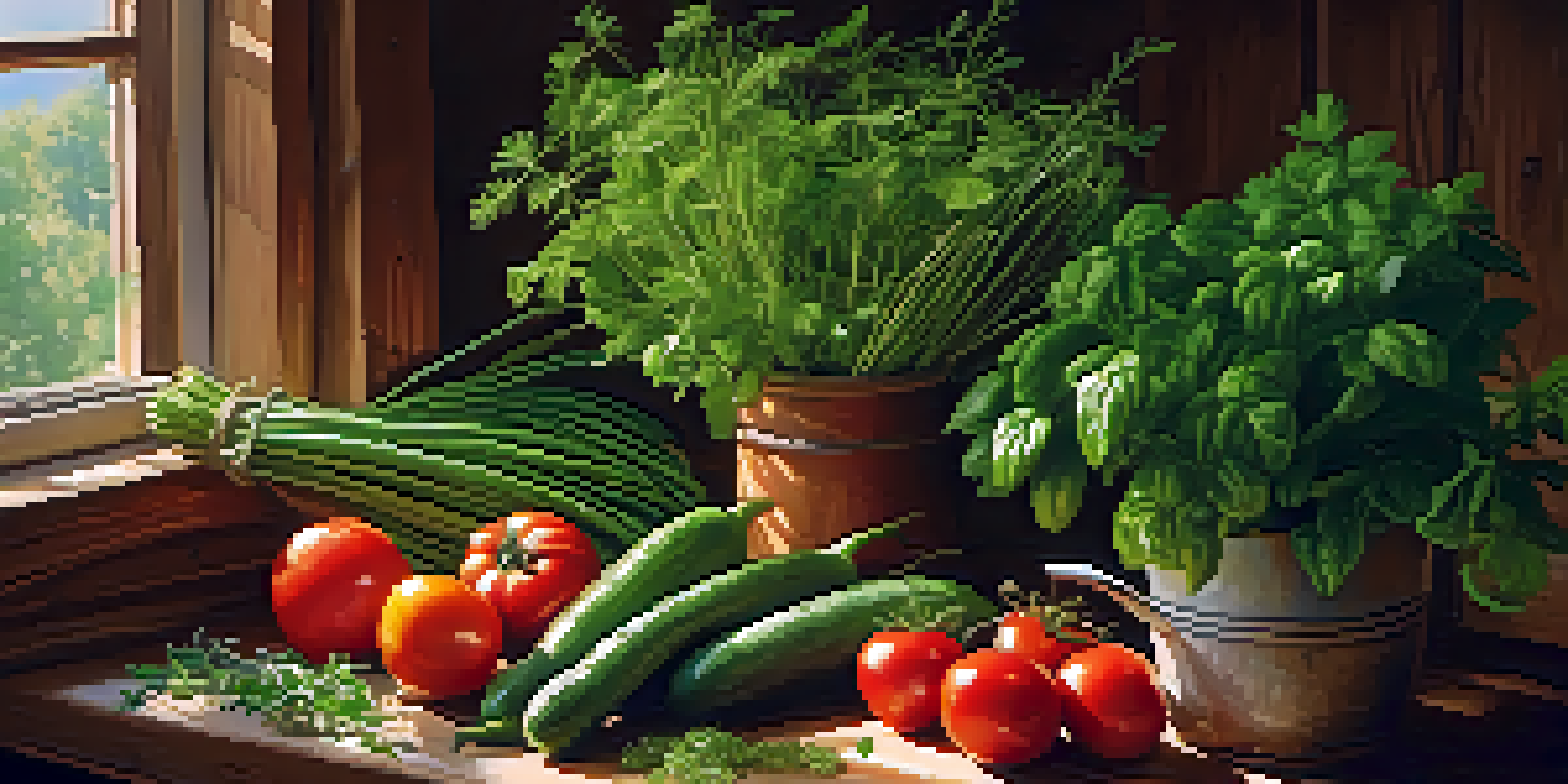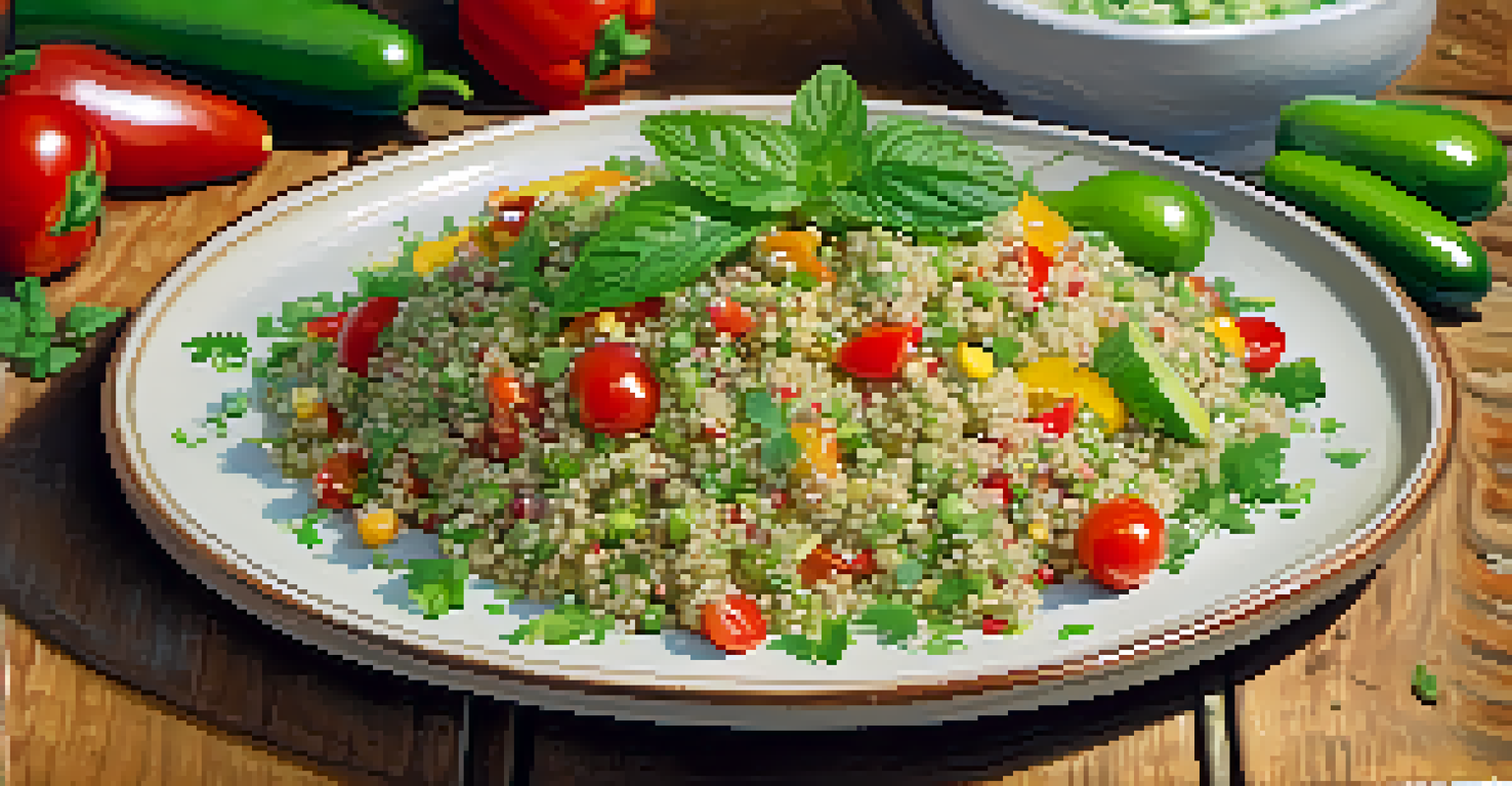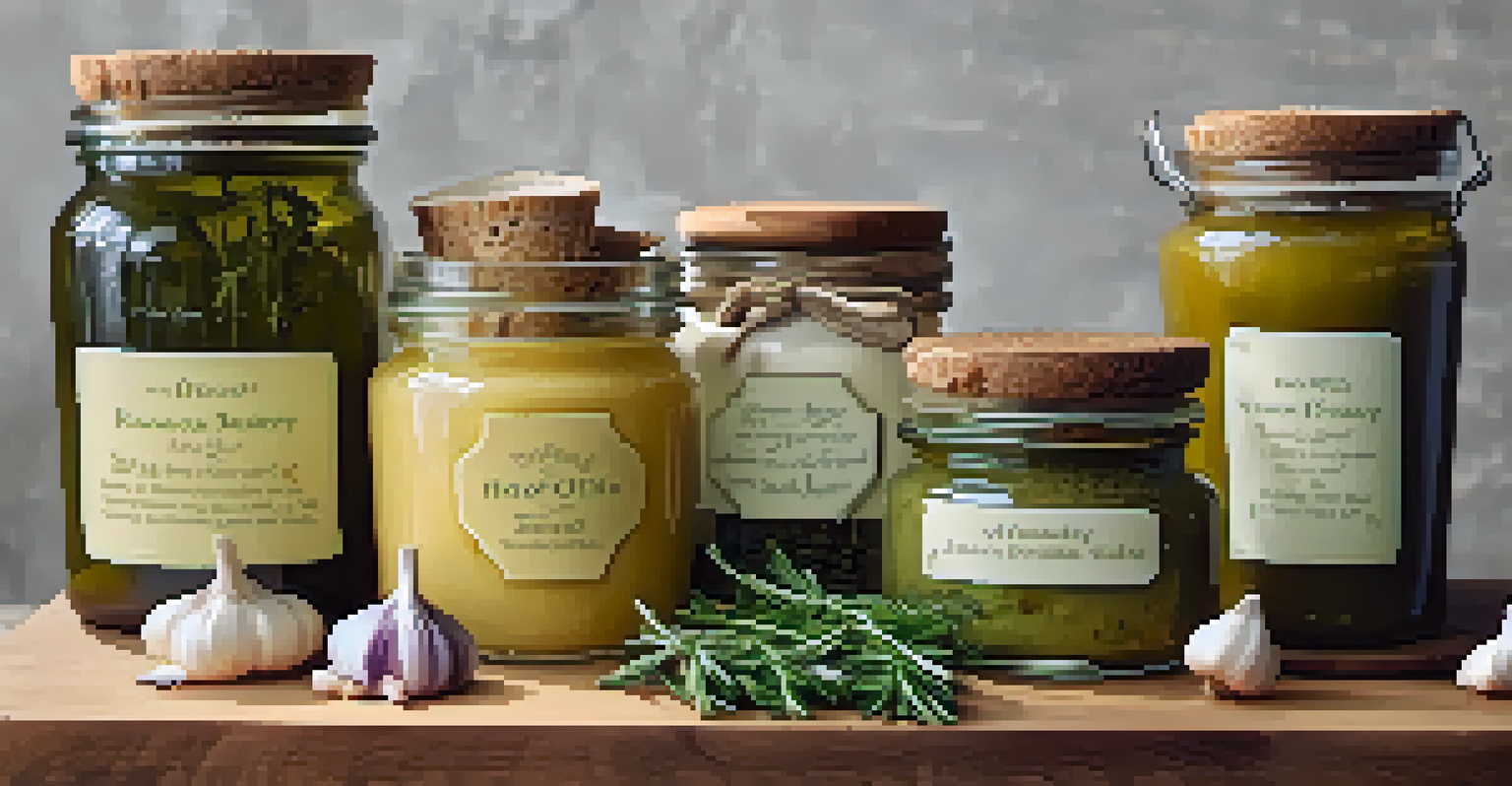The Art of Pairing Herbs with Vegetarian Ingredients

Understanding the Role of Herbs in Vegetarian Cooking
Herbs are the unsung heroes of vegetarian dishes, often transforming simple ingredients into culinary masterpieces. They add depth, flavor, and even health benefits to meals, making them essential for any plant-based kitchen. By understanding the unique characteristics of various herbs, you can elevate your dishes and create a more satisfying dining experience.
Herbs are the spice of life, and adding them to your meals can transform the ordinary into the extraordinary.
For instance, basil’s sweet and slightly peppery flavor complements tomatoes beautifully, while cilantro adds a refreshing zest to beans and grains. This synergy between herbs and ingredients not only enhances taste but also showcases the natural qualities of vegetables. Ultimately, the right herb can turn a mundane meal into an unforgettable feast.
As you experiment with different herbs, consider how their flavors interact with your main ingredients. This exploration will open up new possibilities and encourage creativity in your vegetarian cooking.
Classic Herb Pairings for Common Vegetables
Certain herbs have long-standing relationships with specific vegetables, creating classic pairings that never go out of style. For example, rosemary is a perfect match for roasted potatoes, infusing them with its earthy aroma and woodsy notes. Similarly, dill and cucumber work together seamlessly, enhancing the freshness of salads and pickles.

These classic combinations are not just about tradition; they also stem from a natural balance of flavors. When you pair herbs and vegetables that complement each other, you create a dish that feels harmonious and satisfying. It’s like a duet where each performer shines while enhancing the other’s strengths.
Herbs Enhance Vegetarian Dishes
Herbs add depth and flavor to vegetarian meals, transforming simple ingredients into culinary masterpieces.
Don’t shy away from trying these time-tested combinations, as they can provide a solid foundation for your culinary adventures. Once you’re comfortable, feel free to mix and match to discover your unique flavor profiles.
Exploring Bold Flavors: Spicy and Strong Herbs
Some herbs, like cilantro and mint, can introduce bold, vibrant flavors to your vegetarian dishes. These herbs are particularly effective in recipes that feature grains, legumes, and robust vegetables. For example, a cilantro-lime dressing can elevate a quinoa salad, adding brightness and a touch of spice.
Cooking with fresh herbs is like adding a splash of color to a black-and-white painting.
When working with stronger herbs, balance is key. Pair them with milder ingredients to create a well-rounded dish. For instance, using mint in a pea soup can offer a refreshing contrast to the soup's creamy texture, enhancing its overall appeal.
Experimenting with spicy herbs also allows you to explore different cuisines. Incorporating Thai basil into a vegetable stir-fry can transport you to Southeast Asia, while a sprinkle of oregano can bring an Italian flair to your pasta dishes.
Using Fresh vs. Dried Herbs: What’s the Difference?
Understanding the difference between fresh and dried herbs is crucial for effective pairing. Fresh herbs tend to have a more vibrant flavor and aroma, making them ideal for salads, garnishes, and dishes served fresh. On the other hand, dried herbs, which are more concentrated, excel in slow-cooked dishes, where their flavors can meld with other ingredients over time.
For example, adding dried oregano to a vegetable sauce allows the flavors to deepen, whereas fresh oregano sprinkled on a finished dish adds a burst of freshness. Knowing when to use each type can significantly impact the overall flavor profile of your meal.
Classic Herb Pairings Boost Flavor
Certain herbs have traditional pairings with vegetables that create harmonious and satisfying dishes.
Don't hesitate to experiment with both forms. If a recipe calls for dried herbs, consider substituting with fresh ones, but remember to adjust the quantity since fresh herbs are less potent.
Seasonal Herb Pairings for Fresh Ingredients
Embracing seasonal produce can enhance your meals and ensure you’re using the freshest ingredients. When you cook with seasonal vegetables, pairing them with herbs that thrive during the same time can create a delightful synergy. For instance, in spring, pairing asparagus with chives or lemon thyme emphasizes the freshness of the vegetables.
Using seasonal herbs not only complements your main ingredients but also supports local agriculture and reduces your carbon footprint. This approach encourages a more sustainable way of eating and can inspire creativity in your cooking.
Each season brings its own unique flavors and aromas, so take the time to explore what’s available in your area. This exploration can lead to exciting discoveries and enhance your connection to the ingredients you use.
Experimenting with Uncommon and Exotic Herbs
While classic herbs are essential, don’t shy away from exploring uncommon and exotic herbs that can add a unique twist to your vegetarian dishes. Herbs like lemongrass, shiso, or even lavender can introduce surprising flavor notes. For example, lemongrass works wonderfully in soups and stir-fries, bringing a citrusy freshness that brightens the entire dish.
These exotic herbs can also inspire you to experiment with different cuisines and cooking techniques. By incorporating less familiar herbs, you can broaden your culinary repertoire and impress your friends and family with new flavors.
Experiment with Unique Herbs
Exploring uncommon and exotic herbs can introduce surprising flavors and expand your culinary repertoire.
Just like with any ingredient, start small. A little goes a long way with strong or exotic herbs, so begin with a pinch and adjust according to your taste. You might just find a new favorite!
Herb-Infused Oils and Butters: A Flavorful Twist
One of the simplest ways to incorporate herbs into your cooking is by making herb-infused oils or butters. These flavorful additions can elevate a variety of vegetarian dishes, from drizzling over grilled vegetables to using in pasta sauces. Infusing oils with herbs like garlic, thyme, or rosemary can create a delicious base for countless recipes.
Making herb-infused butter is equally easy and can add a gourmet touch to your meals. Imagine spreading a compound butter made with parsley and lemon zest on warm bread or melting it over steamed vegetables. These small touches can make a big difference in flavor and presentation.

Experiment with different combinations to find what you love most. The beauty of infused oils and butters is their versatility; they can be tailored to suit any dish or occasion.